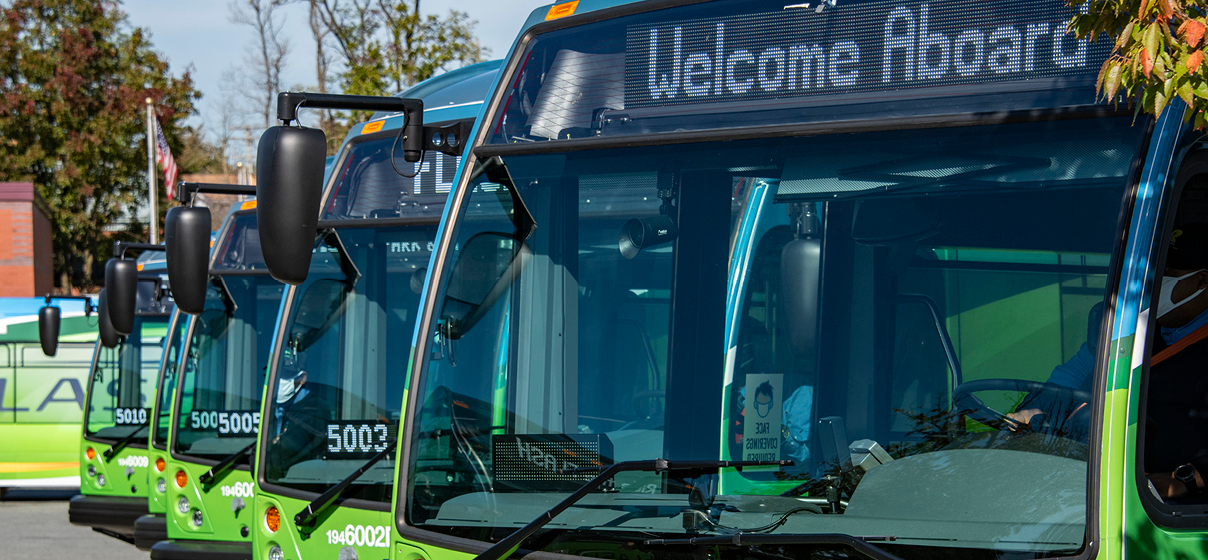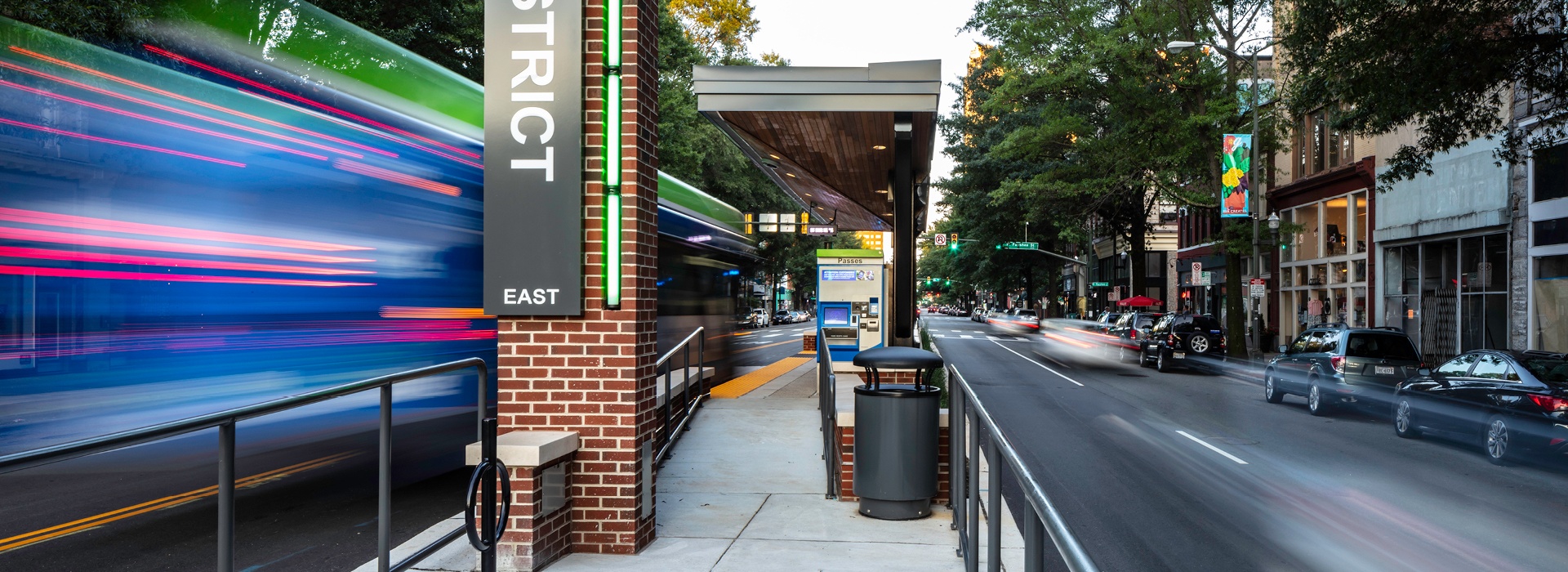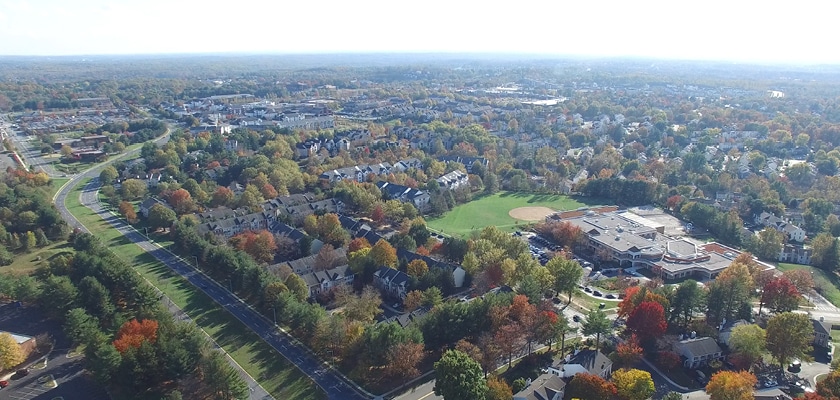
With more than 200,000 people expected to move into Montgomery County, MD, by 2050, county officials are currently implementing a new vision for the future to meet the evolving needs and changing demographics of the region.
One of the core components of that vision is a broader emphasis on walking, biking and mass transit, to reduce car traffic, minimize emissions and enhance safety throughout the county. To that end, the county has initiated one of the most robust bus rapid transit (BRT) implementation plans in the country as a means to effectively take more single occupancy vehicles off the road, and fill gaps for existing areas of rail service. This includes five new transit corridors – one of which is already in service (the U.S. 29 Flash Corridor between Silver Spring Transit Center and Burtonsville), and four more currently in the planning and design phases.
STV’s long-standing team of planning experts, as well as its leaders in BRT implementation and zero-emissions bus technology is currently serving as Montgomery County Department of Transportation (MCDOT) Project Management Consultant, and is providing multidisciplinary services for several initiatives related to this program including the planning of a New Hampshire Avenue BRT; oversight of Veirs Mill Road BRT implementation; the repurposing of lanes or right-of-way for BRT service; program management for the MD 355 BRT progressive design-build; preliminary engineering for US 29 Flash BRT Phase 2; a countywide zero-emission transition plan; a transit asset management plan; a bikeway feasibility study for North Bethesda to Twinbrook; and planning for a new hew bike facility at Cherry Hill Road.
In this roundtable, STV’s Phil Hanegraaf, FAICP, vice president and national planning director, and Jason Mumford, P.E., AICP, vice president and planning manager, are joined by MCDOT’s Flash Bus Rapid Transit Program Manager Joana Conklin to discuss the county’s plan and its implementation.
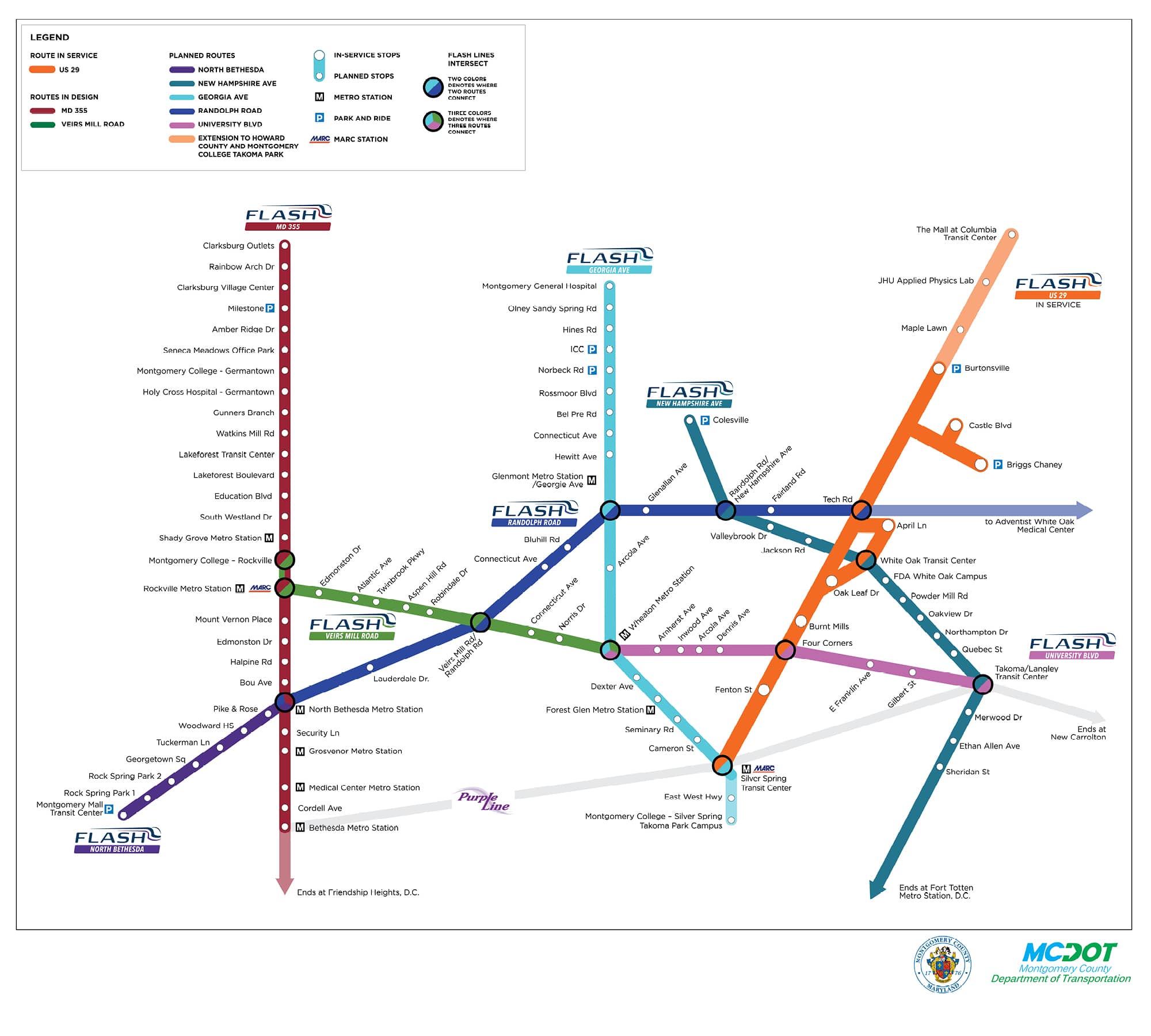
In terms of the broader transit program being implemented by Montgomery County, what kind of value do you believe this approach will provide to residents, commuters and businesses? How do you feel this plan will spur economic development in the region? How Does it benefit communities?
Joana Conklin: A well-connected community is the goal. Transportation provides residents with more opportunities and supports rising incomes, while a lack of convenient transportation is a barrier. A Harvard study found that commuting time is the single strongest factor in the odds of escaping poverty. The longer the commute, the worse the chances for low-income families to move up the ladder.
An area’s overall economic growth depends heavily on access as well. Flash corridors support people coming into an area to visit businesses with reliable and convenient service. When an area is thriving, the residents see the benefits; not only are there more jobs and businesses to visit, but real-estate becomes more valuable as well. Cleaner transit also has impacts on health. Bus riders take more steps during the day and removing cars in place of buses lessens the environmental impact.
What are the county’s expectations for this program?
Joana Conklin: Our vision is that people of all ages and economic classes who are living near the Flash corridors won’t need or want a car because their transportation needs will be fully met and even more convenient. Using public transit will be integrated into the community’s active and environmentally conscious way of life.
What experience does STV have in terms of transit, and specifically BRT planning, and in what ways does this program go above and beyond when compared to other BRT programs that have been implemented around the country?
Phil Hanegraaf: It is unique for a county transportation department to be implementing a program at the scale and magnitude of the Montgomery County BRT Flash Program – an interconnected rapid transit network of some 100 miles across eight corridors. However, the sophistication of the County’s capabilities combined with the support of STV and our team members make it possible.
Joana Conklin: The combined resources of the County from transportation, legal, operations and other agencies help make it possible for us to organize and deliver at this scale. The County Executive’s strong support and insistence on keeping projects on track for delivery is essential to allow us to make our work on BRT a priority.
Jason Mumford: STV’s full-service alignment for BRT planning, construction/delivery, vehicles, and zero emissions helps us meet the high standards of Montgomery County project managers who are industry leaders in their own right. Our collaborative approach to problem-solving has generated unique solutions and demonstrated our commitment. The scope of the BRT program is all-encompassing. Managing multiple corridor development projects while simultaneously addressing policy regarding roadway and lane utilization, funding needs, and alternative delivery approaches sets Montgomery County apart as a national leader.
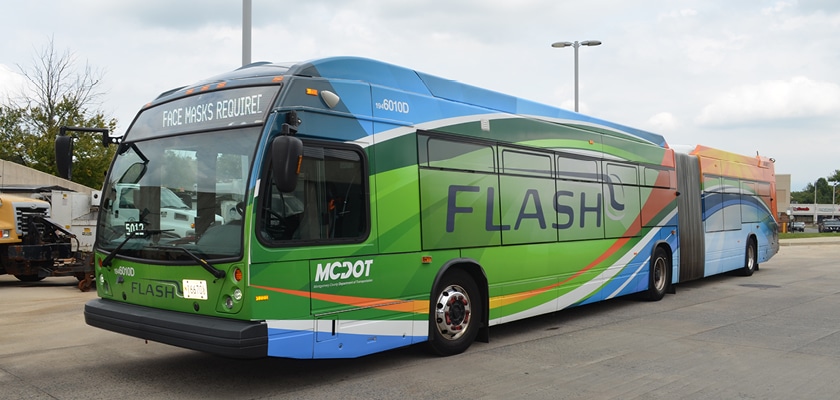
Discuss the partnership between the County and STV. How is the consultant supporting this program? Why was STV selected for the elements it is currently supporting? For STV, how does this program showcase our broad range of planning expertise?
Phil Hanegraaf: STV is supporting multiple corridors for planning and project development, FTA coordination, project design, and construction and delivery.
Joana Conklin: The STV team was selected because their in-house technical capabilities can cover almost any kind of need that may arise in our program. STV has demonstrated its capability to support and adapt as the program and the needs we face evolve over time. Like the program itself, our partnership is dynamic and will continue to evolve through the various phases of the program.
What about our role in this program excites the STV team the most? What are some of the program elements we most anticipate coming to fruition?
Phil Hanegraaf: First and foremost, we are extremely excited to work with the County on one of its most crucial mobility programs. We support the County’s vision for regional rapid mobility and are focused on their success. What excites our team most is the wide variety of work we are undertaking to help bring this system into operation.
How is the County using its BRT expansion as an opportunity to integrate other transit priorities, i.e. zero-emission bus and enhancements to bicycle and pedestrian mobility?
Joana Conklin: Buses are already recognized for reducing greenhouse gases over cars, but as we shift to a zero-emissions fleet by 2035, this will be even more impactful. These corridors can move people with less environmental impact. They also support the development of infrastructure surrounding them for access to the bus stops; this greatly impacts the way people travel in an area. It increases safety, helps businesses become more accessible, and boosts health as it supports walking and biking.
New planned station areas will also create opportunities for new development which will be walkable, offer greater housing choices, and further reduce reliance on auto travel.
Where does the county see this program going next?
Joana Conklin: We have already secured federal funding to move towards hydrogen-powered buses. We have purposefully crafted a zero-emission plan that is flexible so that we can take advantage of new and emerging technology. I think the technology will get better and more efficient as we go. A well-connected, fast system of buses really will have a major impact in supporting Montgomery County’s growth. It really is a matter of building it and they will come, people want to live, work and play in vibrant areas.
